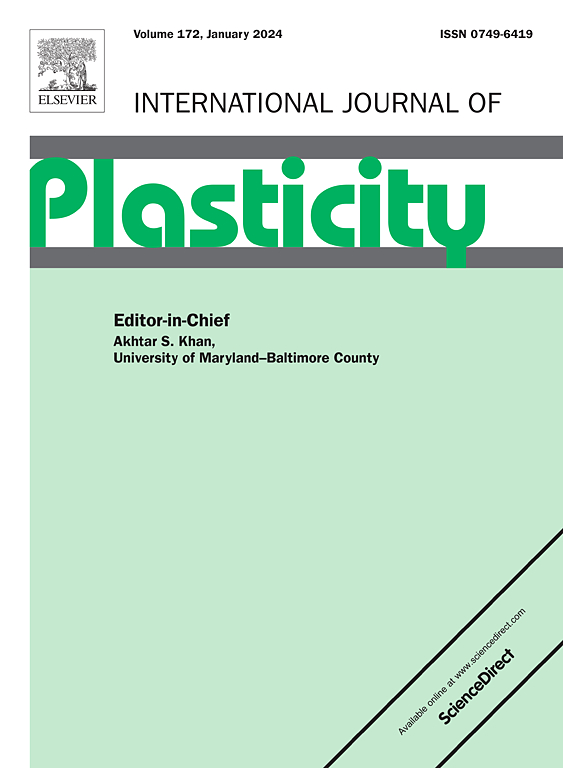High-strain-rate mechanical constitutive modeling with computational parameters
IF 12.8
1区 材料科学
Q1 ENGINEERING, MECHANICAL
引用次数: 0
Abstract
Mechanical constitutive relationships characterize the strain response of materials under external loading, laying the foundation for optimizing material performance and guiding engineering design. However, existing modeling methods for mechanical constitutive relationships, especially for high strain rate (HSR) loading, often rely on fitted experimental data and fail to comprehensively capture the underlying physical mechanisms. In this work, we propose a mechanical constitutive modeling with computational parameters (MCMCP) method suitable for HSR loading conditions, which establishes a quantitative link between the microstructure of materials and their macroscopic mechanical properties by fully integrating fundamental physical principles. This method couples the thermally activated dislocation unpinning mechanism with the phonon drag effect to accurately describe dislocation velocity and the influence of strain rate on plastic behavior. Additionally, a multi-mechanism coordinated strength-solving framework is introduced. It predicts the slip-twinning transition and quantitatively evaluates the contributions of various strengthening mechanisms. By incorporating microstructural evolution information, the material’s flow stress-strain response can also be predicted. Validation against simulations of pure metals and alloys confirms the effectiveness of the proposed method. This work not only enhances the understanding of micro-scale physical mechanisms for mechanical behavior but also provides a practical tool for predicting the mechanical properties under HSR loading.
基于计算参数的高应变率力学本构建模
力学本构关系表征了材料在外载荷作用下的应变响应,为优化材料性能和指导工程设计奠定了基础。然而,现有的力学本构关系建模方法,特别是对于高应变率(HSR)加载,往往依赖于拟合的实验数据,不能全面捕捉潜在的物理机制。本文提出了一种适用于高铁加载条件下的计算参数力学本构建模(MCMCP)方法,通过充分整合基本物理原理,建立了材料微观结构与宏观力学性能之间的定量联系。该方法将热激活的位错解钉机制与声子阻力效应耦合在一起,可以准确地描述位错速度和应变速率对塑性行为的影响。此外,还介绍了一种多机构协调强度求解框架。预测滑移孪晶转变,定量评价各种强化机制的作用。通过结合微观组织演化信息,还可以预测材料的流变应力应变响应。对纯金属和合金的模拟验证证实了所提方法的有效性。这项工作不仅提高了对力学行为的微观物理机制的理解,而且为预测高铁载荷下的力学性能提供了实用的工具。
本文章由计算机程序翻译,如有差异,请以英文原文为准。
求助全文
约1分钟内获得全文
求助全文
来源期刊

International Journal of Plasticity
工程技术-材料科学:综合
CiteScore
15.30
自引率
26.50%
发文量
256
审稿时长
46 days
期刊介绍:
International Journal of Plasticity aims to present original research encompassing all facets of plastic deformation, damage, and fracture behavior in both isotropic and anisotropic solids. This includes exploring the thermodynamics of plasticity and fracture, continuum theory, and macroscopic as well as microscopic phenomena.
Topics of interest span the plastic behavior of single crystals and polycrystalline metals, ceramics, rocks, soils, composites, nanocrystalline and microelectronics materials, shape memory alloys, ferroelectric ceramics, thin films, and polymers. Additionally, the journal covers plasticity aspects of failure and fracture mechanics. Contributions involving significant experimental, numerical, or theoretical advancements that enhance the understanding of the plastic behavior of solids are particularly valued. Papers addressing the modeling of finite nonlinear elastic deformation, bearing similarities to the modeling of plastic deformation, are also welcomed.
 求助内容:
求助内容: 应助结果提醒方式:
应助结果提醒方式:


